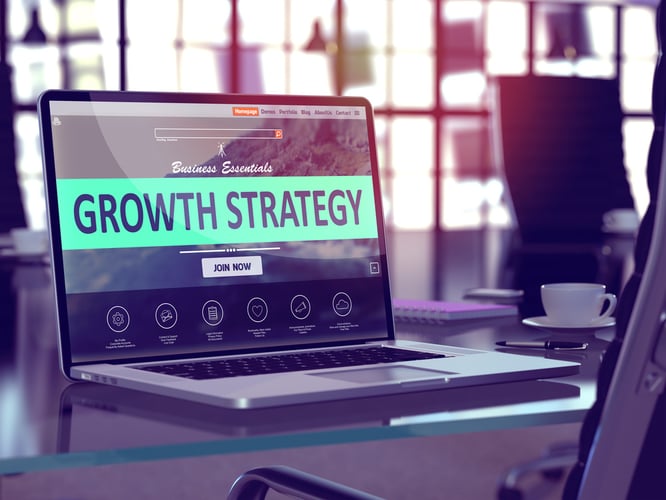When done right, content marketing is a tried-and-tested way for companies to reach buyers, build awareness and earn trust. But more often than not, it becomes yet another ‘random act of marketing’ that eats up your time and your budget.
So why do so many B2B companies struggle to approach content marketing in a strategic way? How can UK SMEs escape the ‘content treadmill’ and start publishing meaningful content that delivers genuine growth? And how should AI be incorporated into this process?
We caught up with two of our fractional CMOs, Fiona West and Hannah Poulton, to discuss how UK SMEs should approach content marketing.
Why content still matters
The way people buy has changed. Today’s buyers want to be able to do their own research, in their own time, before speaking to suppliers. Creating content gives them a way to do that.
“People don’t want to be sold to in the same way they used to,” Fiona explains. “They want to feel in control. Content lets them research on their terms and come to you when they’re ready.”
Cold calling and unsolicited emails don’t cut it anymore. One study found that nearly 90% of people ignore calls from unknown numbers. Cold outbound deliverability has dropped considerably in the past 12 months. “So the only way to be found is to be findable,” says Fiona. “And content is how you do that.”
Hannah agrees: “It’s not even that people think of it as content. They just expect it now. If you’re not creating valuable content, you’re invisible.”
It’s not just about blogs
When people hear “content marketing”, they often think “blog posts”. But content is so much more than that.
It includes webinars, case studies, videos, carousels, podcasts, imagery, and even simple how-to guides or buyer checklists. Anything that helps you build awareness, demonstrate expertise, and earn trust—without overtly selling—is content marketing.
“The best-performing content often doesn’t look like marketing,” Fiona explains. “It’s educational, insightful, or just plain helpful. It’s there to solve a problem, not push a product.”
The range of options may sound daunting. But you don’t need to do them all. Just focus on the formats that suit your audience and your business. For some, that’s thought leadership interviews (like this one). For others, it’s behind-the-scenes videos, customer interviews, or webinar Q&As.
Why businesses struggle to make content work
Content is often treated as an isolated task, not part of a wider strategy. That leads to what Fiona calls “random acts of marketing” that have very little impact.
“They’re doing the activity, but not linking it to their audience, their value proposition or their objectives. They’ve not set clear goals, so they don’t know if it’s working. They’re just making content and then publishing it.”
Hannah sees the same thing. “I worked with a business whose former agency had made a whole YouTube channel full of lengthy videos. One was 45 minutes long. They’d spent a fortune on production, but no one was watching them. There was no plan to promote the content. No thought about what it was for, who it was for, or how it supported the buyer journey. The assumption was that if they just made it, that would be enough.”
Content also suffers when it's created by people who don't fully understand the customer or the subject matter. Most companies want to target decision-makers, but content creators are often junior (or AI). As a result, there’s a huge mismatch in knowledge and experience.
“If your target audience is Chief Information Security Officers, they don’t want to hear from a content marketer with a passing knowledge of cybersecurity,” Fiona says. “They want to hear from someone who knows more than they do. If you can’t offer that, they’ll go elsewhere.”
The fix: expert content with a purpose
Content becomes effective when it has a job to do. That starts with strategy.
Know what your content is for
Every piece of content should earn its place in your strategy. That means tying it to a clear business objective and setting specific targets.
“Even if it’s just moving someone a little bit along the buyer journey, you need to know what the content is for,” says Hannah. “What do you want someone to think, feel or do as a result of reading it? If you can’t answer that question, you shouldn’t be spending your time or budget on that piece of content.”
Content should also be aligned with your buyer journey and the different goals you’ve set at each stage—whether that’s building awareness, nurturing leads, or supporting sales conversations. If it isn’t serving a clear purpose, it’s not worth making.
Target genuine customer needs
Content isn’t about what you want to say. It’s about what your potential customers want to know.
“I always share a simple Venn diagram,” Hannah explains. “There’s what you want your customer to know, and what they want to know. The tiny overlap is where your content needs to sit. If you get it right, that area of overlap becomes a little bit bigger over time.”
That means creating content that answers real questions, solves real problems, and reflects the customer’s actual priorities—not just the messages you want to push.
Fiona puts it bluntly: “Publishing blog posts that talk about how great your product is just the website version of cold calling. No one wants that.”
Build trust, not just traffic
Content isn’t just about visibility—it’s about credibility. The best-performing content earns trust by being authentic, insightful, and grounded in expertise.
“It’s not just a try-before-you-buy for your service,” says Hannah. “It’s a try-before-you-buy for your people. If your content reflects who you are and how you think, your ideal customers are more likely to feel confident in starting a conversation.”
That means involving subject matter experts in the content process. Fiona shares an example: “One of my current clients needs to enhance their reputation for consultancy as well as Saas services, so we had to demonstrate a bit of that thought leadership value and personality. When a critical issue came up in the industry, I recorded a 20-minute call with their MD and turned it into a blog post. It became the most visited page on their site, because it captured a real problem in the customer’s language, from someone who clearly understood it.”
She adds: “It wasn’t a sales page. It was a ‘we understand what you’re dealing with’ page. That’s what builds trust—and that’s what content should do.”
Use AI the right way
AI tools like ChatGPT have made it easier than ever to create content. But relying on them too heavily often leads to one thing: generic, forgettable content that no one will care about.
AI is great at helping with execution—brainstorming ideas, generating outlines, transcribing interviews, and even shaping a first draft. But it can’t replace your team’s experience, insight, or point of view. And it can struggle to replicate a truly distinctive brand tone of voice.
To stand out, you need to start with your experts: the people in your business who understand your customers, their challenges, and what actually works. Get their thoughts down first. Then use AI to polish, structure, and repurpose.
The combination of human insight and AI efficiency is powerful—so long as you lead with the human part.
Where to start: A simple content strategy framework
If your content feels reactive or scattered, the best thing you can do is hit pause—and put a plan in place. Here’s a step-by-step framework to help you create a content strategy that actually drives results:
- Set your objectives
Start with the business goals. Do you want to generate more leads? Improve conversion? Build brand awareness? Be specific—and make sure your content is tied to measurable outcomes. - Define your target audience
Who are you trying to reach? What industries, roles, and pain points are you targeting? “If you're not clear on who you're creating for, you’ll end up creating for yourself,” Fiona says. Get clear on your ideal customer profile (ICP), and prioritise their needs over your own. - Understand what your audience wants
Don’t just think about what you want them to know—think about what they want to learn. “There’s usually a tiny bit of overlap between what businesses want to say and what customers want to hear,” Hannah explains. “Focus on the centre of the Venn diagram that both sides are interested in.” - Clarify your value proposition
Why should someone choose your business over a competitor? What makes you different? Your content should reflect this value clearly and consistently. - Plan content for each stage of the buyer journey
Map out topics and formats that support people through the decision-making process. A typical breakdown often looks like this:
- Awareness: pain point-focused content that solves customer problems
- Consideration: case studies that show how you’ve solved those problems for real customers
- Conversion: in-depth explainers of how the service works, how long it takes, how you deliver it, etc.
Remember: these don’t have to be written content. Video case studies are much more compelling than written ones. Exploring a range of different formats will make for a more engaging experience for your audience.
- Get input from your experts
The most compelling content often comes from internal subject matter experts. Plan ahead for how you will incorporate their expertise. For instance, we do a monthly interview and turn it into blog posts (like this one) and run webinars featuring our experts. - Decide how you’ll distribute it
Publishing isn’t enough. Think about how each piece will reach your audience—whether that’s SEO, email, social, or sales enablement. A single blog post can easily be repurposed into a short video, a social media carousel, multiple social media posts, a newsletter, etc. - Measure, learn and improve
Pick a few key metrics (traffic, engagement, conversion) and track what’s working. Then build on it. Content strategy should evolve as you learn more about what resonates.
Final word
Content marketing doesn’t work when it’s treated like an afterthought. But when it’s led by strategy, grounded in customer needs, and supported by experts in your team, it becomes one of the most powerful tools in your marketing mix.
If you’re creating content and not seeing results, or think content can work for your business but you’re not sure where to start, our fractional CMOs can help. We’ve helped hundreds of businesses define and execute content strategies that drive real long-term growth. Get in touch to find out more.




